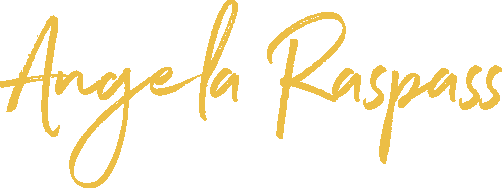How often do you pause and deeply consider the perspective that someone else might have?
I recently enjoyed a wonderful community journalling experience with Ingrid Jones, a brilliant journalling facilitator whom I met via a podcast. The episode Ingrid featured on grabbed my attention thanks to an observation from Annie Romanos, a fabulous ADHD coach who I worked with soon after my diagnosis.
Amongst the many things Annie helped me understand when considering how to best leverage and support my divergent, wildly enthusiastic but often prone-to-rumination brain was directed or guided journalling.
This is a far more generative option to free-flowing journalling for me, as it helps redirect thoughts away from my habit of ruminating on negative or unproductive themes (“Why does X always happen, why can’t I seem to manage Y….”) The theory was that the prompts would steer my mind toward specific topics, breaking this habit and promoting a more positive and constructive thought process.
I tried it out and discovered its immediate benefits – it does stop me from falling headfirst into the dark side of the DMN (default mode network) of my meaning-seeking brain. It does help me to gain far more benefits and productive outcomes from putting pen to paper. And I don’t believe this would only be the case for a neurodiverse brain – Huzzah!
But I digress! How unusual! 🧠 ✨ 🤣
Perspective shifting
As a part of the guided journalling practice that Ingrid shared with us, we started the process by choosing an image that resonated with us from a selection on the screen. This then provided a focus point for the questions that followed.
After the brilliant 5 part journaling process is complete (you can read about this here on her website), we headed into breakout rooms to discuss various aspects of the experience, one is which is what photo did you choose at the start and at the finish and why.
Three of the four of us in my room had chosen the image with a path, a country lane, a dirt track, however, you would describe it (the image above is a representation of it).
As to be expected, this choice connected us. I felt an instant kinship with my fellow path-takers! 😍
And yet, when we shared the why behind our choices, we revealed how very different our thoughts and situations were that led to our decision.
Three different perspectives
💡 For one of us, the worn tracks represented how much our everyday life stays the same, on repeat, until we consciously choose to turn the wheel and change direction.
💡 For another, it illustrated how barren the road ahead can seem but if we look around there’s always evidence of growth.
💡 And for me, it reminded me how the process of building self-leadership is actually one of mindfully stripping back the layers of conditioning that have covered our essential selves so we can come back to what is most vital, essential and natural to us so we can make new, honest choices from there.
One image. Three life experiences. Three areas of focus. Three perspectives.
Everyone sees through different eyes and lives
With empathy and curiosity, we can all learn from others when we take the time to step into their world, even just for a moment.
The ability to take the perspective of another person is an important self-leadership skill that involves the use of two key principles in my five-part framework – Flexible thinking and Emotional Intelligence.
There are many good reasons to develop this skill:
- Improved Communication
Perspective-taking allows you to listen actively and empathetically to others. When you understand and appreciate different viewpoints, you can communicate more effectively and build stronger connections with colleagues, clients, friends and family. This enhances collaboration and reduces conflicts in professional and personal relationships. - Conflict Resolution
Self-leaders who can take different perspectives are better equipped to navigate conflicts and find constructive solutions. When we understand the viewpoints of others, we can find common ground, helping us to negotiate for win-win outcomes and this fosters greater harmony. - Creativity and Innovation
Self-leaders who embrace flexible thinking and emotional intelligence and view situations from various angles are more likely to be able to generate unique ideas, explore alternative solutions, and adapt to change. - Inclusivity and Diversity
When you can embrace diverse perspectives you’re more able to also create more inclusive and diverse spaces. This means Self-leaders are more able to promote an environment where all voices are heard and respected and can be involved to address complex challenges. - Personal Growth and Empathy
A Self-leadership orientation encourages self-awareness and personal growth and the higher levels of emotional intelligence and flexible thinking this creates helps cultivate greater empathy and compassion for others. - Enhanced Decision-Making
When you take the time to consider multiple perspectives you’re more likely to make more informed and thoughtful decisions as you’ve analysed a situation more comprehensively, weighing the pros and cons, and anticipating potential impacts on others. Better decisions lead to wiser choices.
As someone with a temperament prone to quick decisions, this is not always an easy skill for me to lean into. I’ve found by consistently using self-awareness to connect with my values of curiosity, inclusiveness and empathy, I’m learning to slow down and allow the space to do so.
I’m definitely seeing the benefits.
Maintaining your own path
It is important to be aware that whilst a Self-leader is open to these growth opportunities, it is equally important not taken off your own path by the perspectives of others. We need to strike a balance between being open and responsive to new ideas and information and practising discernment.
In the past, before being grounded in Self-leadership, I had a tendency to outsource my authority, allowing the perspective of someone outside of myself to unduly influence the choices I made. That’s a situation often caused by one of three things – a lack of a clear and inspiring vision, a people-pleasing habit or a lack of self-trust, believing that someone or something “out there” holds all the answers.
If this is a habit you recognise in yourself, rest assured that all habits can be changed once you combine awareness with a willingness to change.
I believe the richness of life is best experienced when we are anchored by our own vision and values, with an open heart and mind to what we can learn from those around us. This is the orientation of a Self-leader.
Who and what will you notice, appreciate and learn from today in your own journey?










